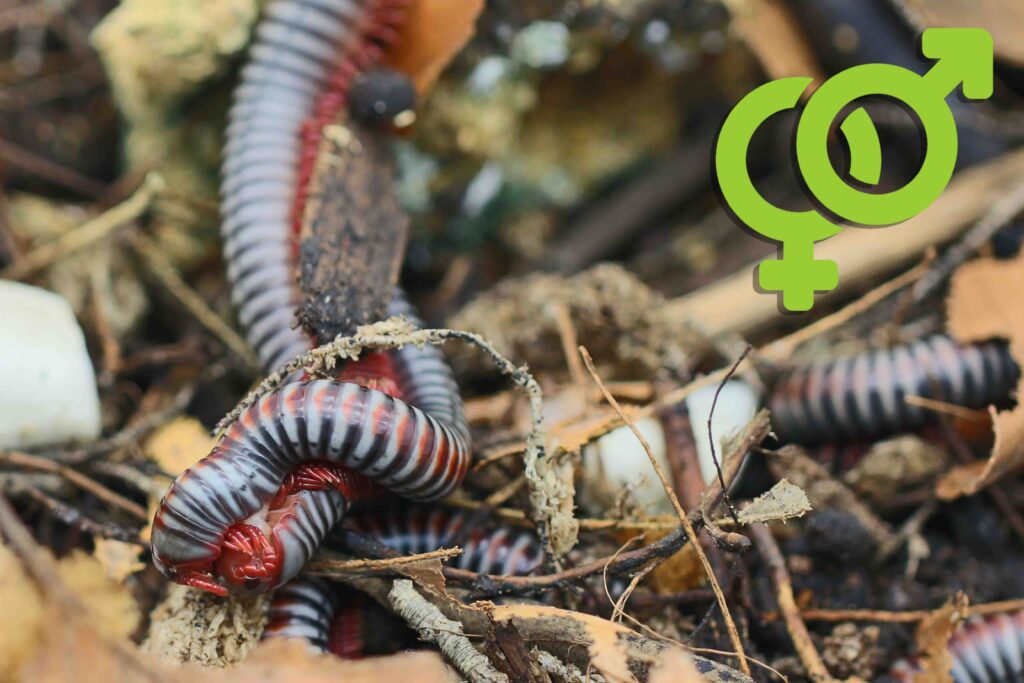Millipede-Magazine
Sex determination of millipedes
Notes from the leg pairs
If you keep millipedes of the Spirobolida group in your terrarium and want to determine the sex of your animals, there is a simple feature that can help you do this. The male representatives of this species lack the pairs of legs in the seventh body segment. This is an easily recognisable, visual distinguishing feature.
To check this, you will need good lighting and some patience, as millipedes are often sensitive to disturbance and can curl up. Try to handle your animal carefully or watch it as it moves freely around the terrarium. Count the segments starting from the head – the seventh segment is the key. If you find no legs on this segment, you are looking at a male. This method is not only helpful to determine the sex of your animals, but also interesting to learn more about the biodiversity and anatomy of your pets.
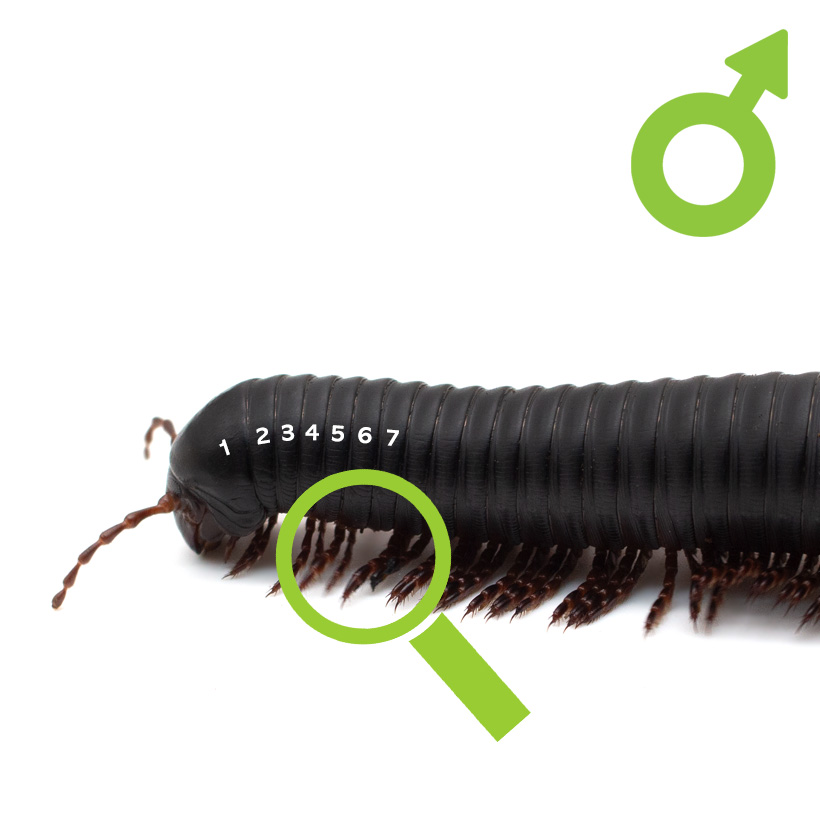

The secret of the seventh segment
Our journey of discovery into the world of male millipedes reveals impressive anatomical adaptations that are specifically geared towards reproduction. One particularly striking adaptation is found in the seventh segment, where the two pairs of legs have been remodelled into gonopods. These specialised structures are used exclusively for mating.
This anatomical adaptation illustrates the sophisticated evolutionary processes that have taken place in these species over time. It shows how specially developed features enable millipedes to optimise their reproductive strategies.
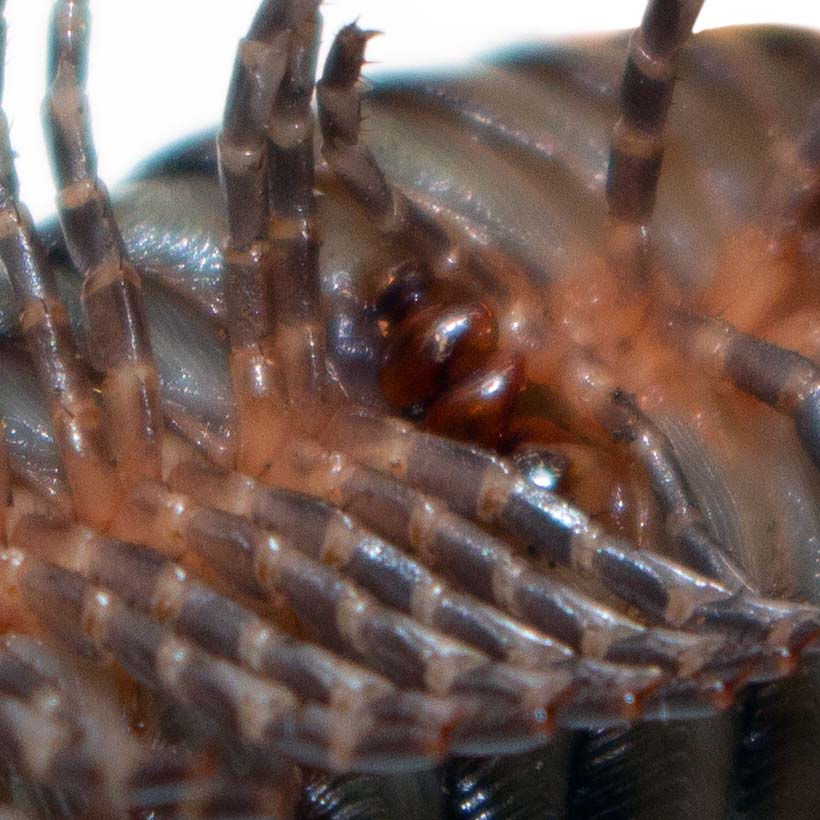
The actual sexual organs
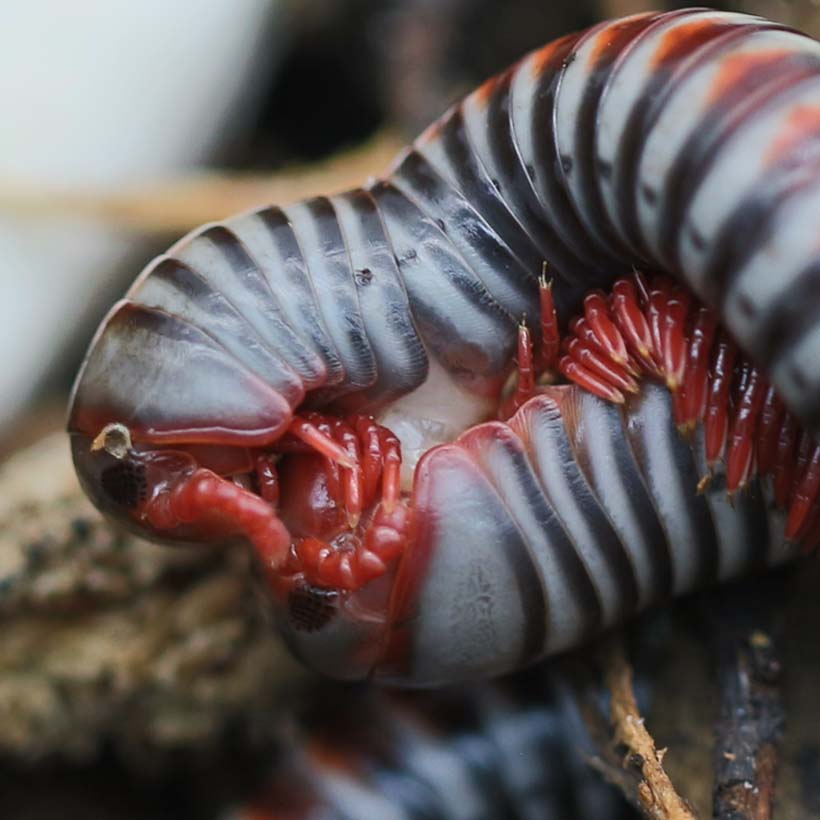
There is also a counterpart for the females, but it manifests itself in a different way. The sexual organs of females, also known as vulvae, are also located in the seventh body segment. Although these structures are not as conspicuous as the coxal bladder in males, they fulfil an equally important role in the reproductive process of millipedes.
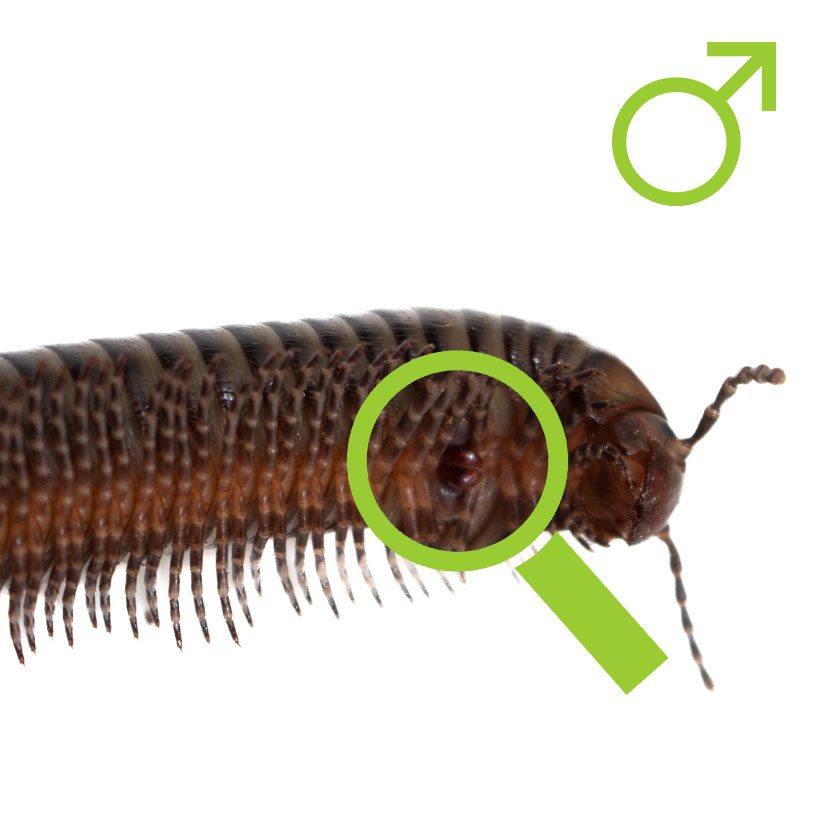
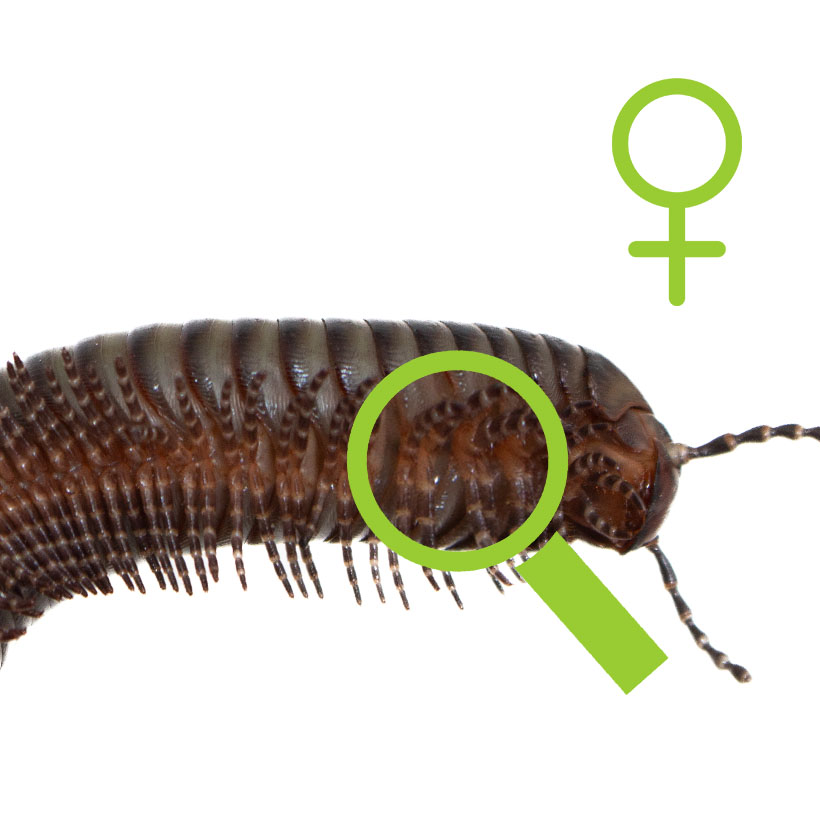
You can find our millipedes for sale here :
If you have any further questions, please leave them in the comments below the article.



